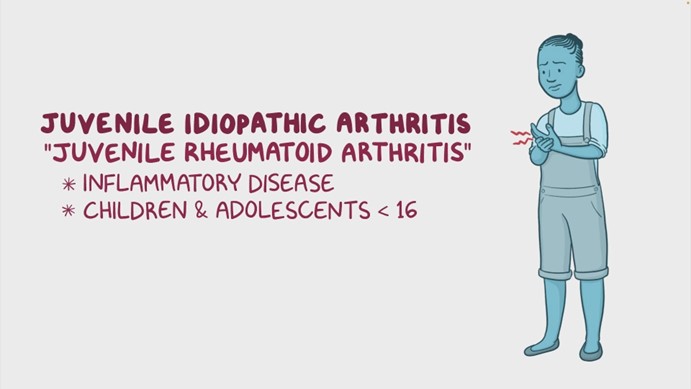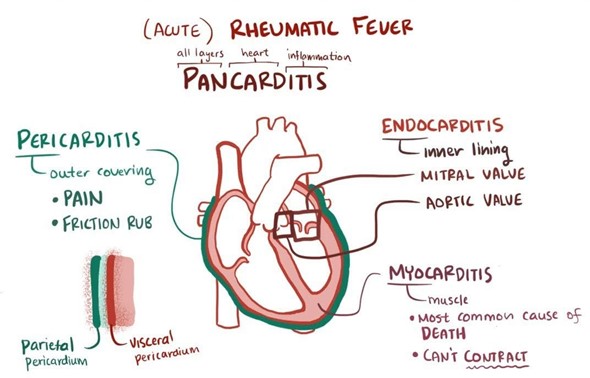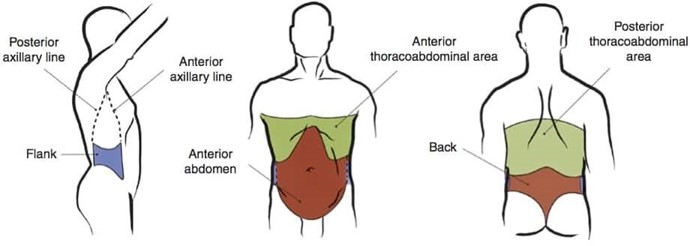A nurse is providing discharge instructions to a parent and his school-age child who has juvenile idiopathic arthritis. Which of the following instructions should the nurse include?
Apply cool compresses for 20 min every hour.
Encourage the child to take a 45-minute nap daily.
Allow the child to stay at home on days when her joints are painful.
Administer prednisone on an alternate-day schedule.
The Correct Answer is D
Choice A reason: wrong because applying cool compresses for 20 minutes every hour is not typically recommended. While cool compresses can help reduce joint swelling and pain, they are usually recommended to be applied for short periods and not as frequently as every hour
Choice B reason: wrong because while rest is important, there is no specific recommendation for a 45-minute nap daily. Adequate rest should be balanced with physical activity, which is essential for maintaining joint function and muscle strength
Choice C reason: wrong because allowing the child to stay at home on days when her joints are painful may lead to prolonged inactivity, which can worsen joint stiffness and reduce muscle strength. It’s important to encourage regular movement and activity as tolerated
Choice D reason: This is correct because prednisone is a corticosteroid used to reduce inflammation in conditions like juvenile idiopathic arthritis, and an alternate-day schedule can be effective in managing symptoms while minimizing side effects

Nursing Test Bank
Naxlex Comprehensive Predictor Exams
Related Questions
Correct Answer is D
Explanation
Choice A: Using a pain-rating tool to determine the severity of the joint pain is not the priority assessment for an 8-year-old child who has acute rheumatic fever, which is an inflammatory condition that can affect various organs, especially the heart, joints, skin, and brain. Joint pain is one of the major criteria for diagnosing acute rheumatic fever and can affect one or more large joints, such as knees, ankles, elbows, or wrists. Joint pain can be managed with analgesics or anti-inflammatory drugs.
Choice B: Assessing the client's erythematous rash is not the priority assessment for an 8-year-old child who has acute rheumatic fever, which is an inflammatory condition that can affect various organs, especially the heart, joints, skin, and brain. The erythematous rash is one of the minor criteria for diagnosing acute rheumatic fever and can appear as pink or red patches on the trunk or limbs. The erythematous rash can fade or change location over time and does not require any specific treatment.
Choice C: Identifying the degree of parental anxiety related to the diagnosis is not the priority assessment for an 8-year-old child who has acute rheumatic fever, which is an inflammatory condition that can affect various organs, especially the heart, joints, skin, and brain. Parental anxiety related to the diagnosis can affect their coping skills and ability to care for their child. Parental anxiety can be addressed by providing education, support, and referral to appropriate resources.
Choice D: Auscultating the rate and regularity of the child's heart sounds and notifying the provider immediately of abnormalities is the priority assessment for an 8-year-old child who has acute rheumatic fever, as it can indicate cardiac involvement, which is the most serious complication of acute rheumatic fever. Cardiac involvement can cause damage to the heart valves, myocardium, or pericardium and lead to heart failure or death. Abnormalities in heart sounds may include murmurs, rubs, gallops, or arrhythmias.

Correct Answer is B
Explanation
Choice A: A heart rate of 72/min is within the normal range for an adolescent, which is 60 to 100 beats per minute. A heart rate of 72/min does not indicate any signs of shock, hemorrhage, or cardiac injury. Therefore, this finding is not the nurse's priority.
Choice B: A blood pressure of 84/52 mm Hg is below the normal range for an adolescent, which is 110 to 120/70 to 80 mm Hg. A blood pressure of 84/52 mm Hg indicates hypotension, which can be a sign of shock, hemorrhage, or internal organ damage. Hypotension can lead to decreased tissue perfusion, organ failure, or death. Therefore, this finding is the nurse's priority and requires immediate intervention.
Choice C: An abdominal pain rated 4 on a scale of 0 to 10 is a moderate level of pain that can indicate inflammation, injury, or infection in the abdomen. However, pain is a subjective symptom that may vary depending on the individual and the severity of the condition. Pain can also be managed with analgesics or other measures. Therefore, this finding is not the nurse's priority.
Choice D: A respiratory rate of 20/min is within the normal range for an adolescent, which is 12 to 20 breaths per minute. A respiratory rate of 20/min does not indicate any signs of respiratory distress, hypoxia, or pulmonary injury. Therefore, this finding is not the nurse's priority.

Whether you are a student looking to ace your exams or a practicing nurse seeking to enhance your expertise , our nursing education contents will empower you with the confidence and competence to make a difference in the lives of patients and become a respected leader in the healthcare field.
Visit Naxlex, invest in your future and unlock endless possibilities with our unparalleled nursing education contents today
Report Wrong Answer on the Current Question
Do you disagree with the answer? If yes, what is your expected answer? Explain.
Kindly be descriptive with the issue you are facing.
